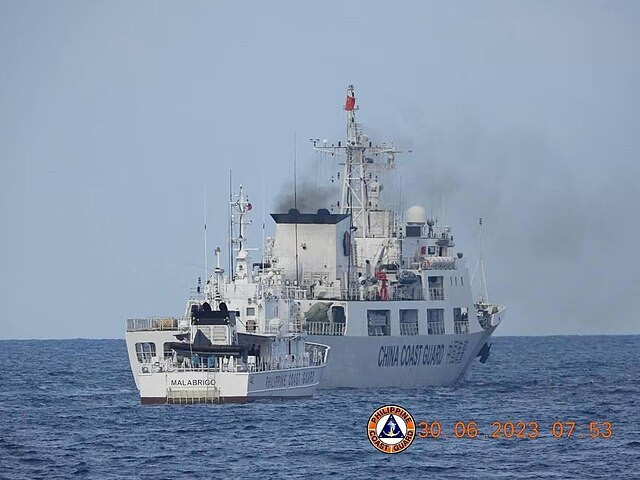The United States has deployed Task Force Ayungin in the Philippines to bolster maritime operations amid heightened tensions in the South China Sea. Named after the Philippine designation for Second Thomas Shoal, the task force underscores Washington's commitment to Manila under their decades-long Mutual Defense Treaty as clashes with China intensify in contested waters.
Defense Secretary Lloyd Austin confirmed the deployment during a visit to the Philippines, where he toured the Command and Control Fusion Center in Palawan and met with U.S. and Philippine military personnel. "I also met with some American service members deployed to U.S. Task Force Ayungin and thanked them for their hard work on behalf of the American people and our alliances and partnerships in this region," Austin wrote on X, formerly known as Twitter.
Pentagon spokesperson Maj. Pete Nguyen clarified the mission of the task force, stating it provides planning, training, and technical support to the Armed Forces of the Philippines (AFP). This includes the integration of unmanned surface vessels, such as the MANTAS T-12 and T-38 Devil Ray drones, which were displayed during Austin's visit. "The T-12 is a key capability used by Philippine forces to protect its sovereignty and operate throughout its exclusive economic zone in the South China Sea," the Pentagon said in a statement.
While the task force represents a significant step in U.S.-Philippine defense collaboration, Philippine National Security Adviser Eduardo Ano emphasized that American involvement is limited to intelligence, surveillance, and reconnaissance. "Resupply to Second Thomas Shoal is always a pure Filipino operation," Ano told reporters.
The South China Sea remains a geopolitical flashpoint, with China asserting near-total control over the region using its nine-dash line claim. Despite a 2016 ruling by an independent tribunal at The Hague invalidating Beijing's claims, China has dismissed the decision and continues to assert its dominance. The Philippines, backed by the U.S., has repeatedly pushed back against Chinese maritime activities, including harassment of supply missions to Second Thomas Shoal.
In recent months, confrontations between Philippine and Chinese vessels have escalated near the shoal, where the BRP Sierra Madre, a grounded World War II-era ship manned by the Philippine Navy, serves as a critical outpost. While previous resupply missions faced harassment from Chinese forces, the most recent operations proceeded without interference, signaling a potential de-escalation, albeit temporary.
The U.S. has reinforced its presence in the region with intelligence, surveillance, and reconnaissance assets. These include MQ-9A Reaper drones, P-8A Poseidon patrol aircraft, and Army Grey Eagle drones deployed to monitor the situation. Secretary Austin's visit also culminated in the signing of an intelligence-sharing agreement between Washington and Manila to enhance their joint maritime domain awareness.
China has criticized the growing U.S.-Philippine military cooperation. "No military agreement or defense cooperation should target any third party or harm their interests," Chinese Foreign Ministry spokesperson Lin Jian said during a press briefing. He warned that such actions could "exacerbate regional tensions" and called for "good-neighborliness and friendship" as the foundation for peace.
Despite Beijing's objections, Washington remains steadfast in its support for Manila. "This task force is a continuation of our longstanding partnership with the Philippines, aimed at ensuring shared security interests," Maj. Nguyen said. Secretary Austin reaffirmed the U.S. commitment to defending Philippine sovereignty, emphasizing that the Mutual Defense Treaty is "ironclad."






